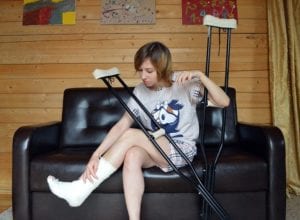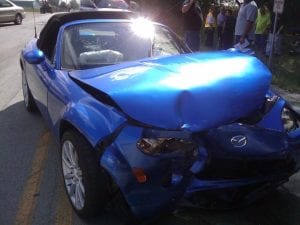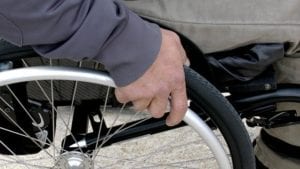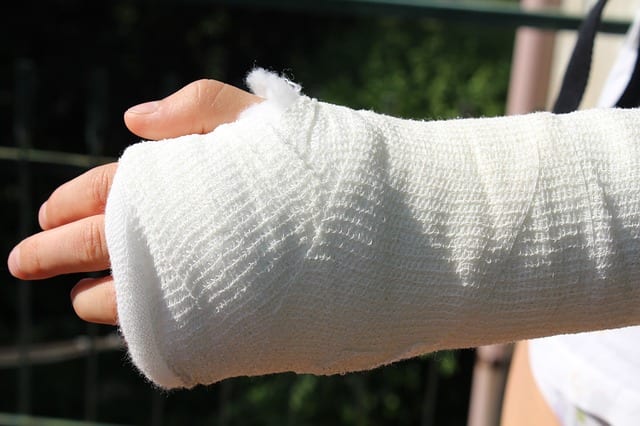 The aftermath of a car accident can be beyond devastating, especially on the human body. The impact forces involved in a collision could cause mild to severe damage to your soft tissues, muscles, or ligaments. They could also fracture or break bones. In this article, we outline the top 5 most common bones broken in car accidents.
The aftermath of a car accident can be beyond devastating, especially on the human body. The impact forces involved in a collision could cause mild to severe damage to your soft tissues, muscles, or ligaments. They could also fracture or break bones. In this article, we outline the top 5 most common bones broken in car accidents.
Severe broken bone injuries require long-term medical treatment and rehabilitation. This could set you back hundreds or thousands of dollars in medical bills and lost wages. Fortunately, you can seek financial compensation for your losses.
If you have sustained a broken bone injury due to a negligent driver, contact Karnas Law Firm to discuss your eligibility for compensatory damages with an experienced Tucson Personal Injury Attorney.
What Causes Broken Bones in a Car Accident?
 During a car accident, your vehicle will experience a variety of impacts from other vehicles, the road, or an obstacle. Your body will be affected by these movements in several ways that could cause broken bones. You could be:
During a car accident, your vehicle will experience a variety of impacts from other vehicles, the road, or an obstacle. Your body will be affected by these movements in several ways that could cause broken bones. You could be:
- Ejected from the vehicle if you were not wearing a seat belt
- Struck by the airbag or other items in the car
- Slammed into your seat belts
- Thrown onto the pavement once ejected out of the car
- Pinned down by a heavy car part such as a broken door
Arm and Wrist
- During a crash, you might try to brace yourself for impact against the steering wheel or dashboard. The resulting force could travel up your hand and arm, causing fractures in your arm and wrist bones. Although the wrist contains more fragile bones and is more prone to injury, breaks in the upper, side, and low arm are also common.
Lower and Upper Leg

- The lower leg is comprised of several bones that are flexible and strong and aid in activities such as running, walking, and jumping. Despite their strength, however, they can fracture when exposed to excessive force.
- The femur, a bone running from the hip to thigh, can also be vulnerable to fractures in a high-speed collision. Lower and upper leg fractures tend to be severe and require immediate medical attention.
Spinal Cord
- The spinal cord transmits signals from the brain to the body and back. It consists of small bones called vertebrae that are cushioned by fluid-filled discs. In severe cases, a spinal cord injury can cause temporary or permanent disability or death.
Ribcage

- You are likely to be thrown against the steering wheel, airbag, or dashboard during a collision. This impact could cause breakage in your ribcage, the organ that protects your heart and lungs. Generally, it is nearly impossible to isolate the ribcage from movement, thus ribcage injuries are challenging to treat.
Skull Fractures
- Under enough pressure, the hard bones of the skull can shatter. This tends to happen when a person’s head impacts the window, steering wheel, or dashboard, or when they are ejected from the vehicle.
Symptoms of Broken Bone Injury
 Breaking or fracturing a bone is a painful experience. You will usually feel the pain when it happens. However, some symptoms may take longer to appear due to shock or adrenaline. Minor breaks might also not be evident at first. Here are some signs to look out for:
Breaking or fracturing a bone is a painful experience. You will usually feel the pain when it happens. However, some symptoms may take longer to appear due to shock or adrenaline. Minor breaks might also not be evident at first. Here are some signs to look out for:
- Discoloration, bruising, or redness
- Tenderness around the site of injury
- Swelling
- Reduced range of motion
- Extreme pain at the site of injury
- Deformed limb
- Fever, nausea, and headache
Types of Fractures
Broken bones differ from each other. The type of fracture you sustain will usually depend on the accident and your exposure level during the crash. Generally, a car accident could result in the following fracture types:
- Transverse – This is where the bone is broken into two at a right angle.
- Compound – The broken bone will protrude through the skin
- Comminuted – The bone breaks into multiple pieces
- Stress – This is a partial fracture when one side of the bone bends and the other fractures
- Buckle – Common I children. Happens when a bone bends but does not break
- Avulsion – Here, the muscles and ligaments separate from the bone
- Greenstick – Occurs when the bone cracks due to bending but does not break into separate pieces.
- Hairline – These are little cracks in the bone that could go unnoticed. If untreated, the cracks could grow and weaken the bone.
Commonly affected bones in the body include the femur, arm, hip, clavicle, ankle, and sternum. Back and spinal cord breaks tend to be severe and could cause paralysis.
Get Help from a Tucson Personal Injury Attorney
 A broken bone injury has the potential for great harm. Depending on the severity, it could cause partial or permanent disability, preventing you from engaging in daily activities or working. The related medical costs could also significantly set you back financially.
A broken bone injury has the potential for great harm. Depending on the severity, it could cause partial or permanent disability, preventing you from engaging in daily activities or working. The related medical costs could also significantly set you back financially.
At Karnas Law Firm, we help victims who have suffered the most common bones broken in car accidents get compensated for their losses. If you need help with an injury case, contact us today to speak to an expert Tucson Personal Injury Attorney.
CALL NOW: 520.462.3886
